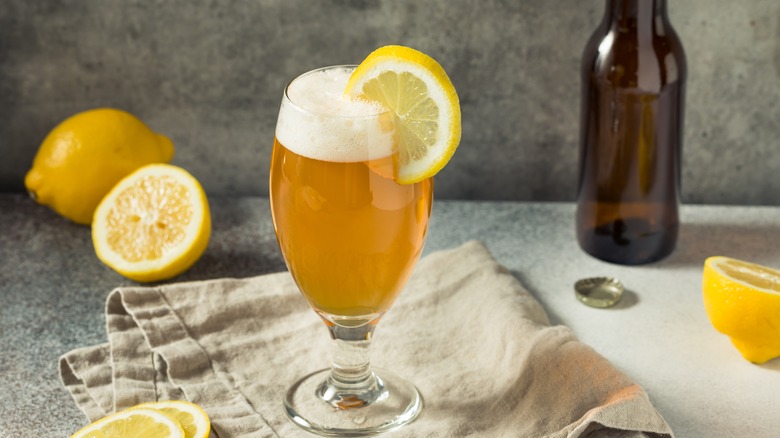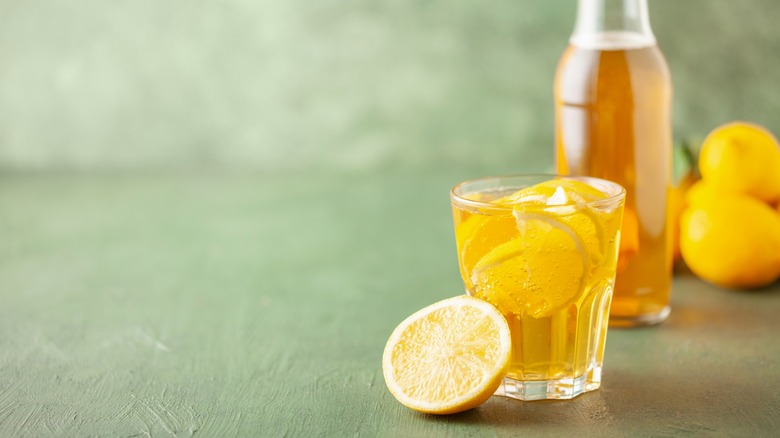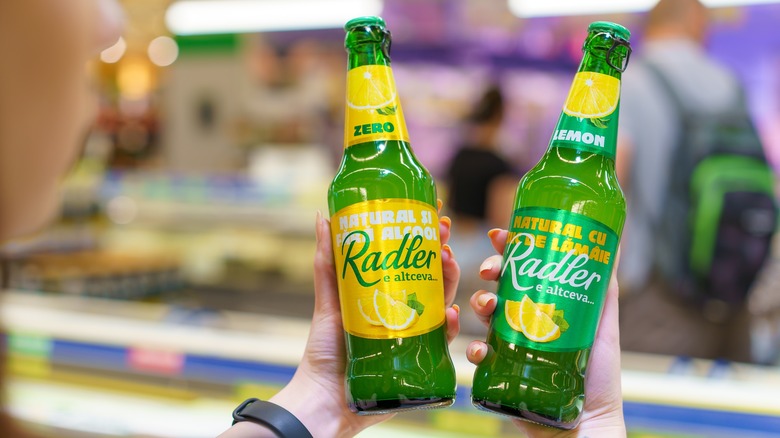The Exact Difference Between A Radler And A Shandy
If you're mixing some kind of fruit juice into your beer, chances are that you're calling it a shandy or a radler — or maybe you just use both of these terms interchangeably. But there's actually a small difference between these two iconic beer cocktails. Both of them should be made with a 50-50 combination of beer and another mixer, but the difference is in what your mixer is.
Strictly speaking, a shandy is a mix of beer and lemonade, or some kind of lemon soda or soft drink. There's no ultra-strict rule, but it should be a carbonated drink on the lemon-flavored side of things. You could argue that drinks like Sprite and 7UP are acceptable for shandy-making even though they skew a bit more into lime territory. Meanwhile, a radler is more flexible. It can also be made with a lemon soda (in which case, there's not really any difference between it and a shandy), but other juices are acceptable too. Grapefruit, for example, is a common radler flavor.
All about the shandy
Part of the difference between shandies and radlers is simply that they have a different history. The shandy is a British creation, and it's the older of the two — the first recorded mention of it is around the 1840s. At that time, it was called a shandygaff and referred to a mix of beer and ginger beer. It evolved to be a lemonade drink later on, and the "shandygaff" name has fallen out of use, except in some parts of the Caribbean (where it refers to the ginger drink, not the present-day lemon one). It wasn't until the mid-20th century that lemon took over, with the term "shandy" now mostly seen as referring to this version of the drink.
A shandy will typically be made with a lighter beer, like a blonde or a pilsner. A dark beer like a stout isn't advisable. There's not really an authoritative reason for this; intensely flavored dark beers might be an odd and overpowering mix when paired with lemonade, but theoretically, there's no reason why a mild dark beer couldn't work. The reason for this combination being shunned is possibly because dark beers are seen as wintery, whereas light beers (and fruity ones) tend to be seen as summery, and shandies are typically viewed as a summer beverage.
What to know about radlers
The radler comes from Germany, with the name meaning "cyclist" in German. This is because of the tale of how the radler was invented. Sometime around the 1920s, a group of cyclists stopped by a Bavarian pub. The owner was short on beer, so he padded out the beer he had with something sweet like lemonade to cater to the crowd. It's hard to confirm how true this legend is, but it has generally stuck as the origin story of the radler. Because of their background, you'll probably encounter them more in Germany, but they've been spreading across Europe and even to the U.S. in recent years. There are other radler-adjacent beers in Germany, but when they don't have juice, they tend to use different names. For example, a Diesel is made with beer and cola, and a regular beer with a shot of fruity syrup is known as "mit schuss."
Like shandies, radlers are usually made with lighter beers. Due to their German origin, you could argue that they should be paired with German beers. A light helles beer is often recommended as the go-to combination, but other beers from the light side of the spectrum (like pilsners) are fine, too.


